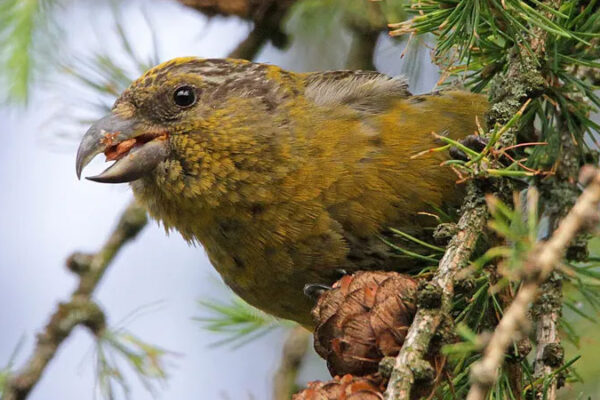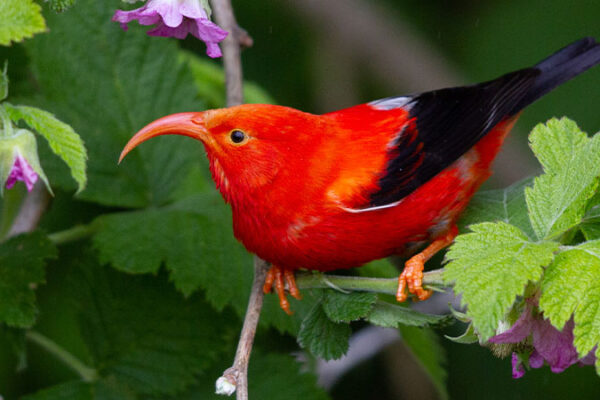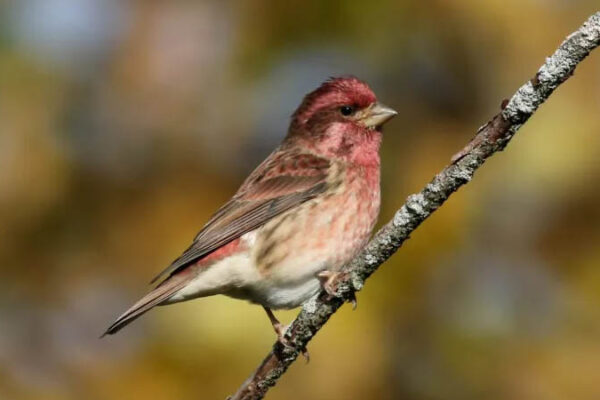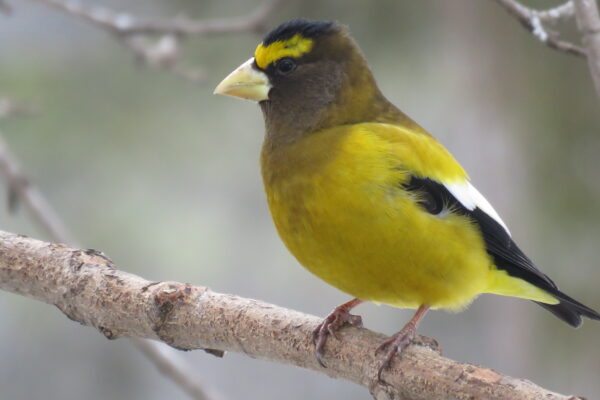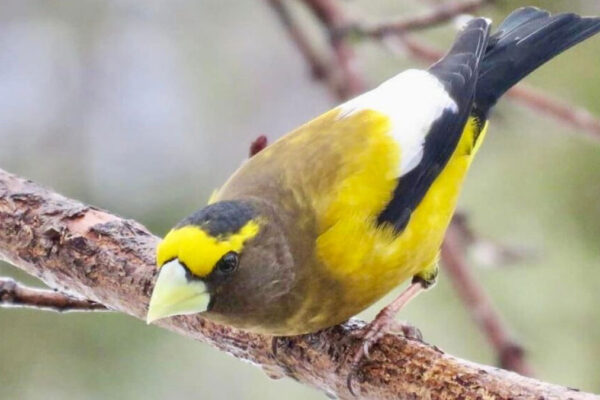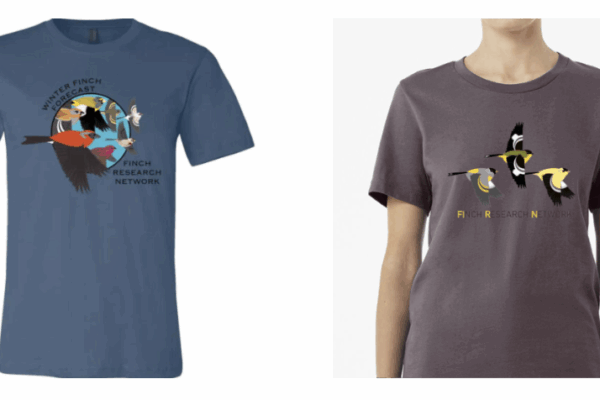The Evening Grosbeak Project
International Road to Recovery
The Evening Grosbeak has declined 92% since 1970 and is listed as a species of conservation concern.
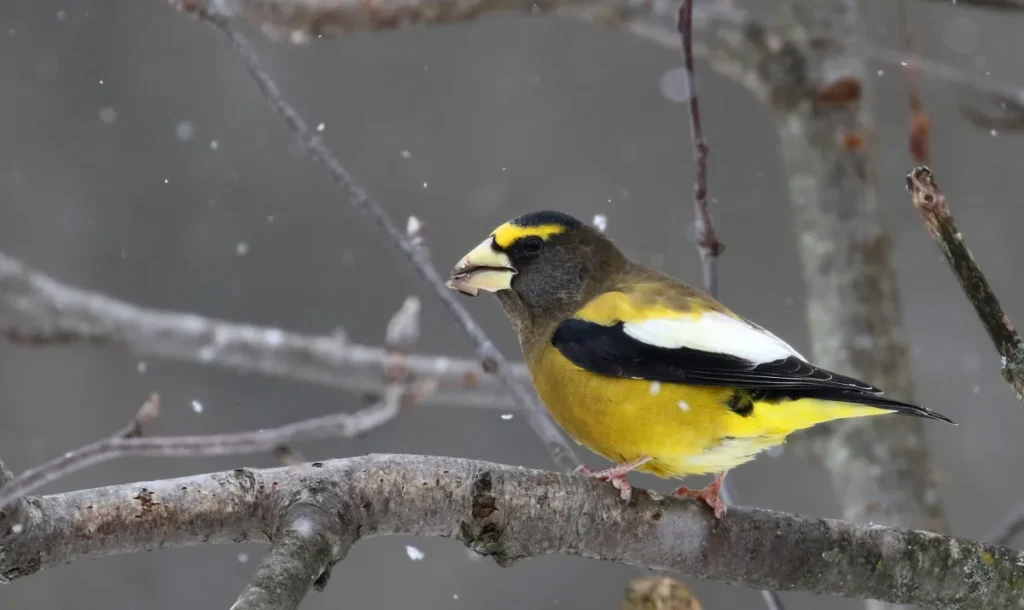
Research
FiRN is dedicated to the study and conservation of finches and their habitats globally. View FiRN’s project portfolio
Live Feeder Cam
We’re back! Livestream of Bill’s feeders in Woodland in northern Maine. Sponsored by the Finch Research Network and Aspen Song Wild Bird Seed.
Winter Finch Forecast
It looks to be a flight year for many species in Eastern Canada. With mostly very poor crops in the boreal forest from central Quebec westward to Manitoba, this has the potential of being the biggest flight year since 2020-2021.
The concept of the Finch Research Network (FiRN) began with Ian Newton and Ron Pittaway decades ago, making a connection between the summer cone crops of cedars, spruces, and pines and the abundance—or scarcity—of siskins, crossbills, and grosbeaks in the winter. It was discovered that predictions could be made about the winter finches based on what he saw during the summer on coniferous trees.
Mission: FiRN is dedicated to the study and conservation of finches and their habitats globally.
Featured FiRN Projects
The Crossbill Project
The Crossbill Project Photo: @ Jens Halbauer Purpose is to provide a stable, long-term home for Crossbill research over a broad front: field observations, recordings, assortative mating and call type delineation by sound, range and DNA. Provide information to the scientific community on the validity of call types and potential full-species separations for flight call types, geographically isolated populations…
The Honeycreeper Project
The Honeycreeper Project The iconic finches of Hawai‘i are facing a conservation crisis. Non-native predators, the loss of habitat, and invasive species have negatively affected them for hundreds of years, and these issues continue to be problematic, but it’s the introduced avian malaria that is the greatest threat to their survival. Climate change leading to…
The Purple Finch Project
The Purple Finch Project Field recording and study of the differences between Type 1 (western) and Type 2 (eastern) Purple Finches
227
Finch Species
Worldwide
60
Red Listed
Finch Species
41
Endangered or Extinct
Finch Species
Get Involved
Whether it’s through sound recording finches, making a donation, adding scientific expertise via writing, research or support, or having gear you could loan, there are several ways you can contribute to building the Finch Research Network that Ian Newton and Ron Pittaway started for us all 50 years ago!
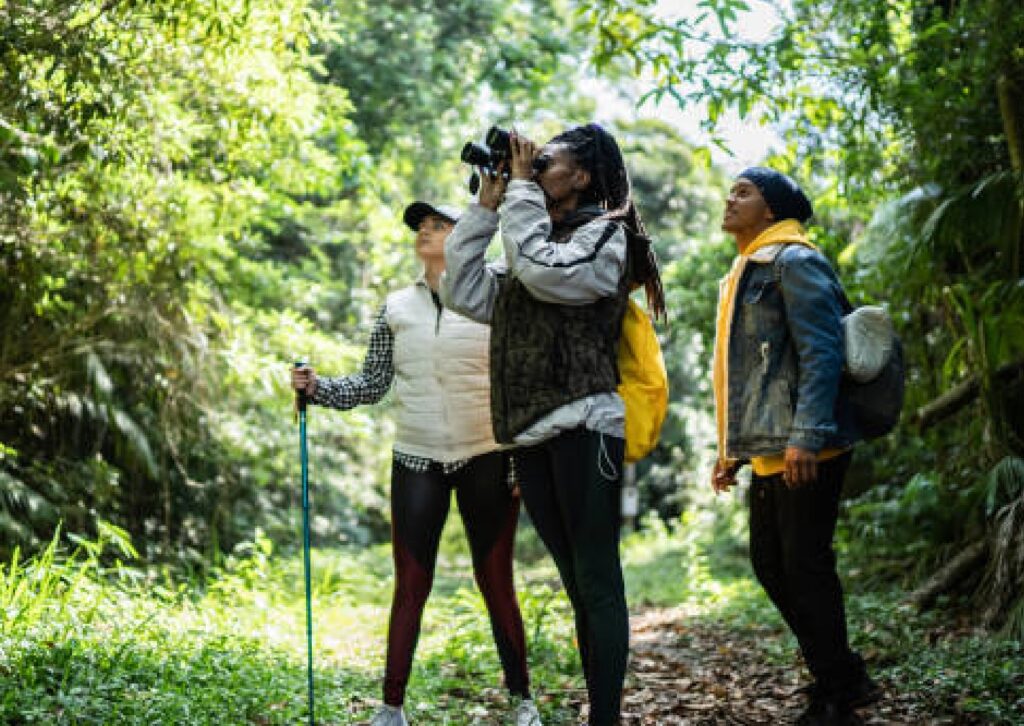
Partners
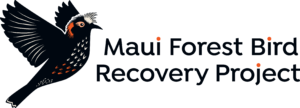

Support & Collaboration
- Tyler Hoar and Ron Pittaway | Finch Forecast
- Freeport Wild Bird Supply
- Coastal Virginia Wildlife Observatory
- Cayuga Bird Club Ithaca
- Aspen Song Wild Bird Feed
- David Yeany Western Pennsylvania Conservancy
- Lillian Stokes | Stokes Field Guides
- Nathan Pieplow | Earbirding
- Lance Benner | Pasadena Audubon
- Cornell Lab of Ornithology
- Jeff Groth | American Museum of Natural History
- Jamie Cornelius | Oregon State
- Thomas P. Hahn | UC Davis
- Mark Robbins | U. Kansas

